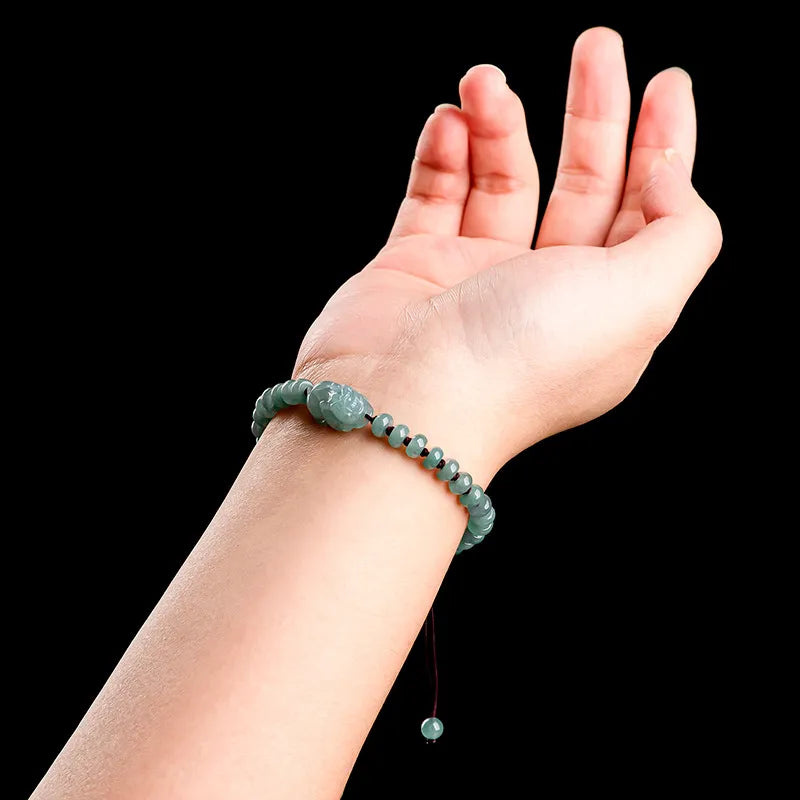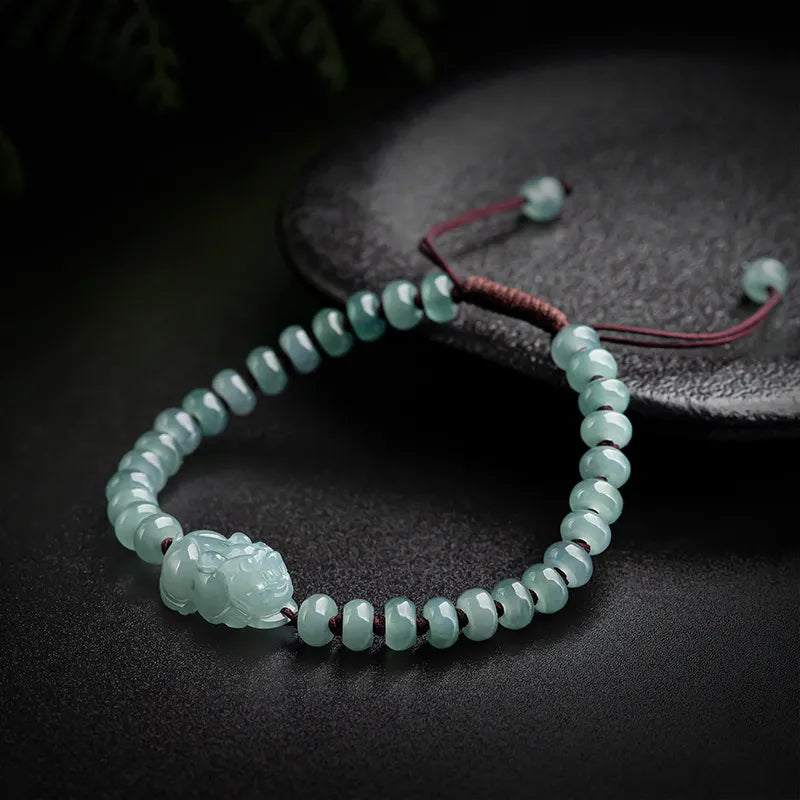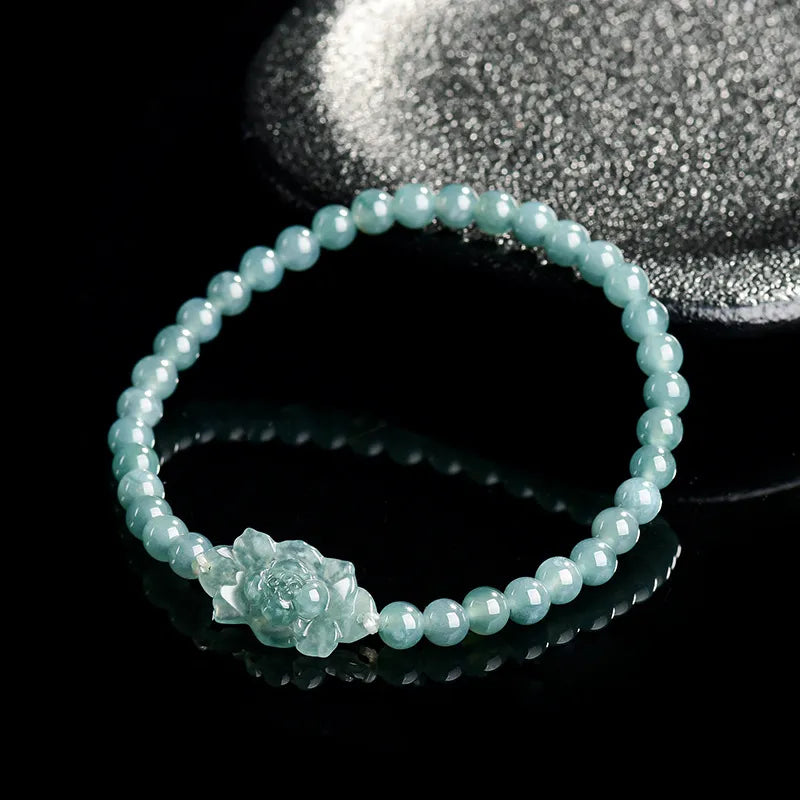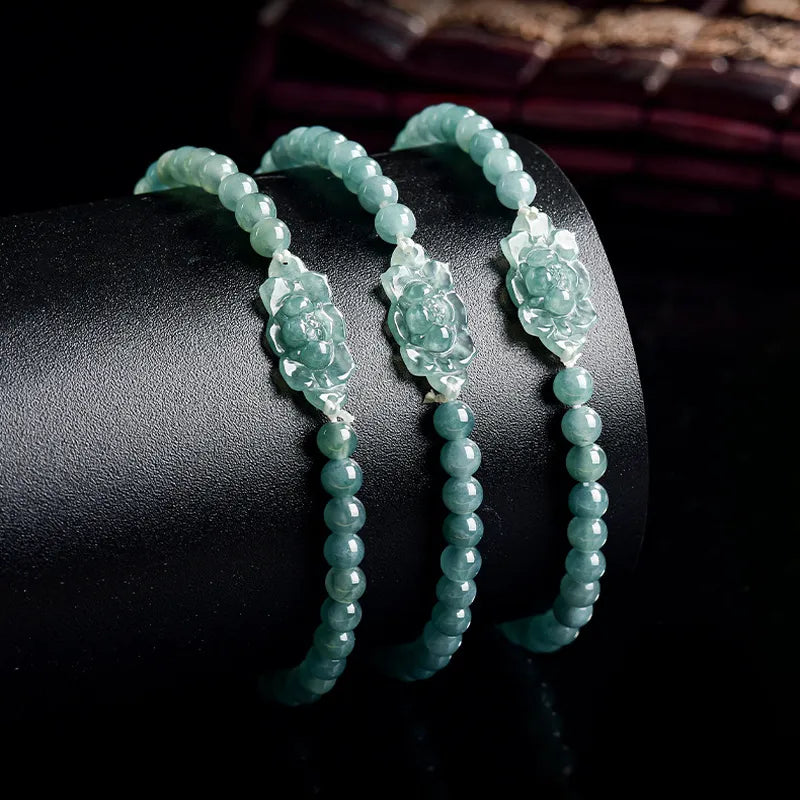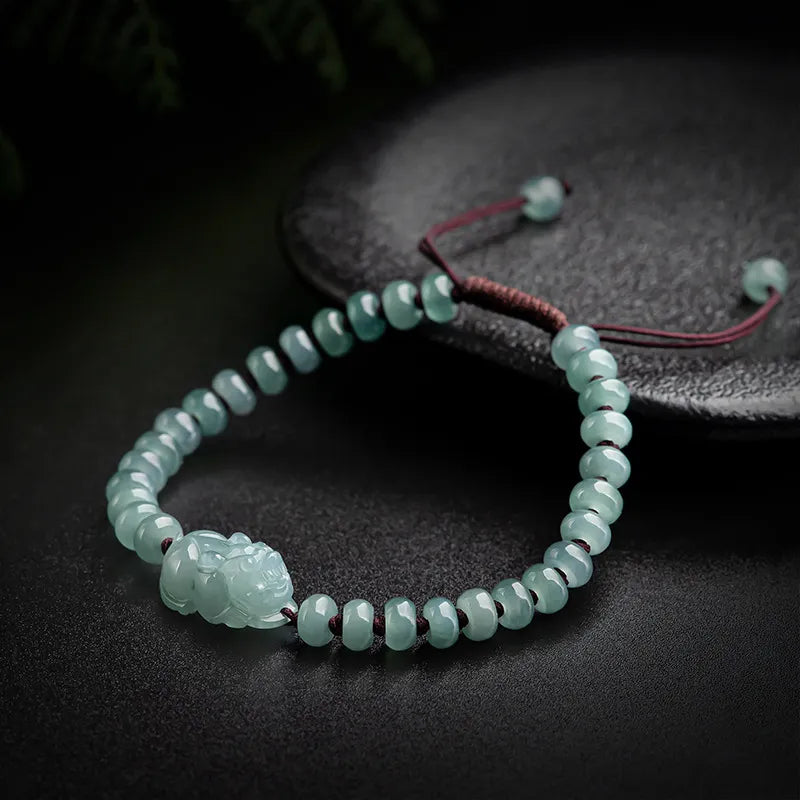How to Identify Eco-Friendly Materials in Jade Bangles: A Practical Guide
As consumers increasingly prioritize sustainability, distinguishing genuine eco-friendly materials in jade bangles becomes essential. Traditional jade production often involves chemical treatments or mining practices that harm ecosystems. Below, we explore methods to verify environmentally conscious materials without relying on branding or certifications alone.

1. Understanding Natural vs. Treated Jade
Eco-friendly jade bangles rely on untreated, naturally sourced stones. Chemical enhancements not only degrade environmental safety but also compromise the material’s authenticity.
- Color Consistency: Genuine, untreated jade exhibits subtle color variations and natural inclusions like “stone veins” or minor imperfections. Synthetic dyes or acid treatments create uniform, overly vibrant hues that lack depth.
- Thermal Reaction: Hold the bangle briefly against your cheek. Natural jade remains cool to the touch, while plastics or resin-based imitations may warm up quickly due to poor thermal conductivity.
- Sound Test: Gently tap the bangle with your fingernail. Authentic jade produces a clear, resonant ring, whereas treated or composite materials often emit a dull thud.
Visual Inspection: Use a magnifying glass to check for microscopic cracks or filler materials. Acid-treated jade may show artificial “web-like” patterns from chemical etching.
2. Verifying Sustainable Mining Practices
Eco-friendly jade originates from mines that prioritize ethical extraction and minimal environmental disruption.
- Traceability: Ask sellers about the jade’s origin. Regions like Myanmar (Burma) or Canada’s Yukon Territory are known for stricter environmental regulations, though transparency varies. Avoid stones with vague or undocumented sourcing.
- Water Usage: Traditional jade mining consumes vast amounts of water for dust suppression and processing. Sustainable operations often recycle water or use dry-processing techniques to reduce waste.
- Soil Rehabilitation: Responsible mines replant vegetation and restore soil post-extraction. Look for sellers who partner with organizations promoting post-mining land recovery.
Community Impact: Eco-conscious mines often support local communities by providing fair wages and avoiding child labor. While hard to verify directly, research the region’s labor practices for context.
3. Chemical-Free Finishing Techniques
The polishing and finishing stages of jade production can introduce harmful chemicals. Eco-friendly alternatives prioritize natural methods.
- Polishing Agents: Traditional polishes may contain lead, mercury, or synthetic waxes. Natural alternatives like beeswax or plant-based oils are safer for both workers and the environment.
- Surface Coatings: Some bangles are coated with epoxy resins to enhance shine. These coatings can flake off over time, exposing the skin to microplastics. Opt for uncoated or minimally treated stones.
- Dye Detection: UV light can reveal artificial dyes. Place the bangle under a blacklight; natural jade fluoresces weakly, while dyed stones may show uneven patches or bright spots.
Olfactory Test: Natural jade has a faint, earthy scent. Strong chemical odors indicate recent treatments with solvents or varnishes.
4. Avoiding Recycled Material Pitfalls
While recycling jade scraps sounds eco-friendly, improper handling can introduce contaminants.
- Material Purity: Recycled jade should be free from adhesives, metals, or synthetic fillers. Ask if the bangle is made from 100% reclaimed stone or if it’s blended with other materials.
- Energy Consumption: Recycling processes that use high heat or chemicals may offset environmental benefits. Look for cold-pressing or mechanical grinding techniques, which consume less energy.
- Certification Gaps: Few certifications exist for recycled jade, so rely on visual and tactile checks. Recycled pieces often have irregular shapes or tool marks from reshaping.
Ethical Consideration: Recycled jade reduces waste but may lack the cultural significance of newly mined stones. Balance sustainability with personal or cultural preferences.
5. Longevity as a Sustainability Indicator
Durable materials reduce the need for frequent replacements, lowering environmental impact over time.
- Hardness Test: Jade ranks 6.5–7 on the Mohs scale. Scratch the bangle’s surface gently with a steel knife. Authentic jade resists scratches, while softer imitations (like soapstone) show marks.
- Crack Resistance: Bend the bangle slightly (if possible) to test flexibility. Natural jade is brittle but doesn’t bend; composites or plastics may flex excessively.
- UV Stability: Leave the bangle in sunlight for a day. Natural jade fades minimally, while dyes or treated stones may discolor or become brittle.
Maintenance Tip: Eco-friendly jade requires minimal care. Avoid harsh cleaners; a soft cloth and mild soap suffice. Over-polishing with chemicals can strip its natural luster.
Final Thoughts on Eco-Conscious Selection
Identifying eco-friendly jade bangles involves scrutinizing materials, sourcing, and finishing techniques. By prioritizing untreated stones, sustainable mining, and chemical-free processes, consumers align their purchases with environmental values. Transparency from sellers and hands-on testing remain the most reliable tools in this journey.
